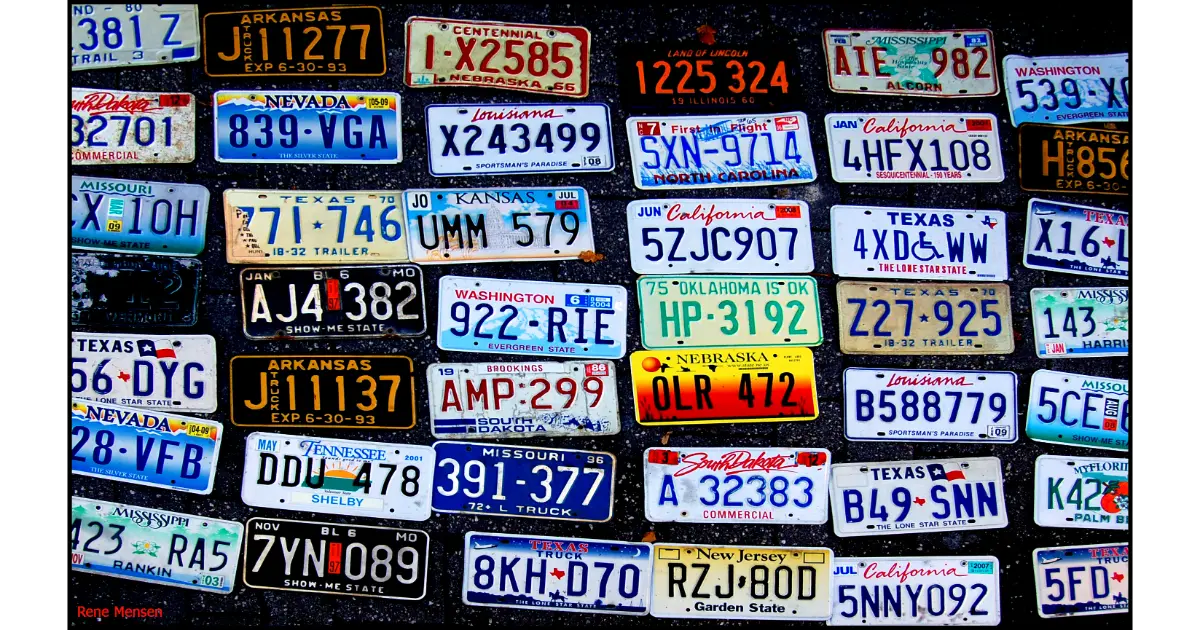Absolutely! License plates, those shiny tags on the back and sometimes the front of cars, are usually made from either aluminum or, less commonly, steel. Why aluminum? It’s because aluminum is lightweight, rust-resistant, and easy to emboss with all the numbers and letters we see. Plus, it’s a cinch to recycle, making it a friendlier choice for our planet.
Now, here’s where things get colorful! After shaping the plate, it gets coated with a special paint. This isn’t just any paint; it’s reflective, so the plate can be easily seen at night or in bad weather. They also slap on more layers, like a protective coating, to ensure the plate lasts through rain, sun, and everything in between.
Sometimes, for a bit of local pride or to spice things up, plates might have fancy designs, state symbols, or even slogans. These designs are usually baked right into the plate, ensuring they don’t fade or peel off over time.
A Journey Through the Fabrication and Significance of License Plates
Welcome to the fascinating world of license plates – those everyday items we see on vehicles but rarely give a second thought. These plates, however, hold a story worth telling that intertwines with history, technology, and the ever-evolving demands of modern transportation.
This comprehensive exploration will delve into the materials and processes that give life to license plates. Beyond their functional role of vehicle identification, license plates serve as a canvas reflecting societal changes, technological advancements, and environmental considerations. Their journey from raw materials to our vehicles’ shiny, colorful identifiers is intricate and intriguing.
Understanding the Identity and Purpose Behind the Plates

At their core, license plates are government-issued identification tags for motor vehicles. But why do we need them? The primary purpose is identification. Just like people have names, vehicles have license plates.
This unique combination of letters and numbers ensures that each car can be individually recognized for legal, ownership, or enforcement purposes.
The Role in Law Enforcement and Public Safety:
License plates are pivotal in traffic law enforcement. They assist in identifying vehicles involved in violations or accidents and play a critical role in parking management and toll collection. In emergencies, they are crucial for tracking and identifying vehicles.
Cultural and Personal Expression:
Beyond their practical use, license plates have evolved into a personal and cultural expression medium. Specialized or vanity plates allow vehicle owners to display a bit of their personality or affiliations. Commemorative plates celebrate cultural events, historical figures, or local flora and fauna, showcasing a region’s heritage and pride.
Economic and Environmental Considerations:
From an economic perspective, the production and renewal of license plates represent a significant activity, generating revenue through registration fees and taxes. Environmentally, the shift towards sustainable materials in plate manufacturing reflects growing ecological consciousness.
Technological Integration:
Advancements in technology have also left their mark on license plates. Digital license plates, though not widespread, are an emerging trend, indicating a future where technology integrates more deeply with vehicle identification.
In essence, license plates are a multifaceted element of our modern world. They bridge legal requirements, personal identity, cultural expression, economic activity, environmental responsibility, and technological progress. As we dive deeper into their composition and creation, we gain a greater appreciation for these everyday objects
that play a significant role in our lives.
From Raw Materials to Road-Ready Identifiers
License plates, those ubiquitous identifiers on vehicles, have a story of evolution and innovation. This journey from basic identification tags to intricate elements of vehicle identity involves a blend of materials, manufacturing techniques, and design evolutions, reflecting society’s changing needs and advancements.
Materials Used in License Plates:
Traditionally, license plates have been made predominantly from metal, specifically aluminum, due to its lightweight, durable, and rust-resistant nature. However, in the past, plates were also crafted from porcelain, leather, and wood. Modern plates often blend materials, including plastics and reflective coatings, to enhance visibility and durability.
| Material Type | Description | Characteristics |
| Aluminum | Shiny, lightweight metal | Resistant to corrosion, durable |
| Reflective Sheetings | Thin, reflective material | Enhances visibility, weather-resistant |
| Plastic | Durable plastic material | Affordable, customizable designs |
| Stainless Steel | Rust-resistant metal | Long-lasting, tough |
| Embossed Letters/Numbers | Raised characters | It provides a tactile feel, easy identification |
| Paint and Coating | Protective layer | Adds colors, UV-resistant, prevents fading |
Manufacturing Process:
Making a license plate is a fine blend of industrial prowess and artistic touch. It starts with a sheet of aluminum, which is cut to size. This metal is then embossed with numbers and letters through high-pressure machinery.
Following embossing, the plates are painted and decorated with reflective materials, ensuring visibility under various lighting conditions. This process ensures durability and meets the aesthetic and legal standards set by multiple jurisdictions.
Design and Technological Innovations:
Over the years, the design of license plates has evolved significantly. We now see various colors, graphics, and digital elements from simple black-and-white plates. Some regions offer custom designs, allowing vehicle owners to showcase their personality or support for causes.
Technological innovations have introduced features like barcodes and RFID tags for enhanced tracking and identification.
Environmental Considerations:
The environmental impact of license plate production is also a growing concern. Advances in materials science have led to the exploration of more sustainable and recyclable materials, reducing the ecological footprint of these essential items.
Global Variations:
Globally, license plates vary significantly. European plates, for instance, tend to be longer and narrower, while North American plates are more rectangular. The color schemes, numbering formats, and renewal systems also differ, reflecting cultural and administrative diversities.
Vehicle Identification and Registration:
At the heart of license plates is vehicle identification and registration. These terms are essential in understanding the primary function of license plates in linking a vehicle to its owner and ensuring legal compliance.
Automotive History and Culture:
The evolution of license plates is intertwined with automotive history and culture. Keywords like automotive innovation, vehicle design, and transportation evolution highlight this connection, showcasing how license plates have adapted to changing vehicle designs and societal needs.
Material Science and Sustainability:
Exploring aluminum manufacturing, recyclable materials, and sustainable production connects to the environmental aspect of license plate creation. These terms emphasize the shift towards eco-friendly practices in the automotive industry.
Global Standards and Diversity:
Terms like international vehicle standards, cultural diversity in design, and regional variations reflect the global perspective of license plates. They underscore how different regions have unique approaches to plate design and regulations.
Technological Advancements:
They are incorporating keywords such as digital license plates, RFID technology, and advanced vehicle identification links to the technological dimension of modern plates. It highlights the innovative approaches being adopted for enhanced efficiency and security.
Artistic Expression and Personalization:
Keywords like custom license plates, vanity plates, and personal expression in vehicle identification delve into the personalization aspect of license plates. These terms demonstrate how plates have become individual expression and artistic design mediums.
Key Takeaways:
Identification and Enforcement: License plates are crucial for traffic law enforcement, parking management, and emergency response.
Cultural and Personal Expression: They offer a personalization and artistic expression platform through custom designs.
Environmental Consciousness: Advancements in materials science are leading to more sustainable plate production.
Technological Integration: Digital license plates and RFID technology represent the future of vehicle identification.
Global Diversity: License plates vary in design, color, and numbering formats.
Artistic Evolution: The design of license plates has evolved significantly, reflecting changes in technology and societal values.
FAQs
How are license plates made?
License plates are typically made from lightweight and rust-resistant materials like aluminum. They undergo embossing, painting, and reflective coating processes for durability and visibility.
Can I customize my license plate?
Many regions offer custom or vanity plates, allowing vehicle owners to personalize them with unique designs and messages.
Are there digital license plates?
Digital license plates with features like RFID technology are emerging, enhancing vehicle identification and security.
How do license plates vary globally?
License plates differ in design, color schemes, and numbering formats worldwide, reflecting regional and cultural variations.
What is the environmental impact of license plates?
Efforts are being made to use more sustainable and recyclable materials in license plate production to reduce their environmental footprint.
Conclusion
License plates, in their essence, are symbols of identity, innovation, and adaptability. They are the guardians of our roadways, facilitating law enforcement, traffic management, and emergency response. But they are also the canvas for personal expression, reflecting our individuality and cultural affiliations.
As we’ve journeyed through this exploration, we’ve touched upon the materials that form the backbone of license plates – lightweight and rust-resistant aluminum, and we’ve marveled at the intricate manufacturing processes that transform raw materials into functional, visually appealing identifiers.









